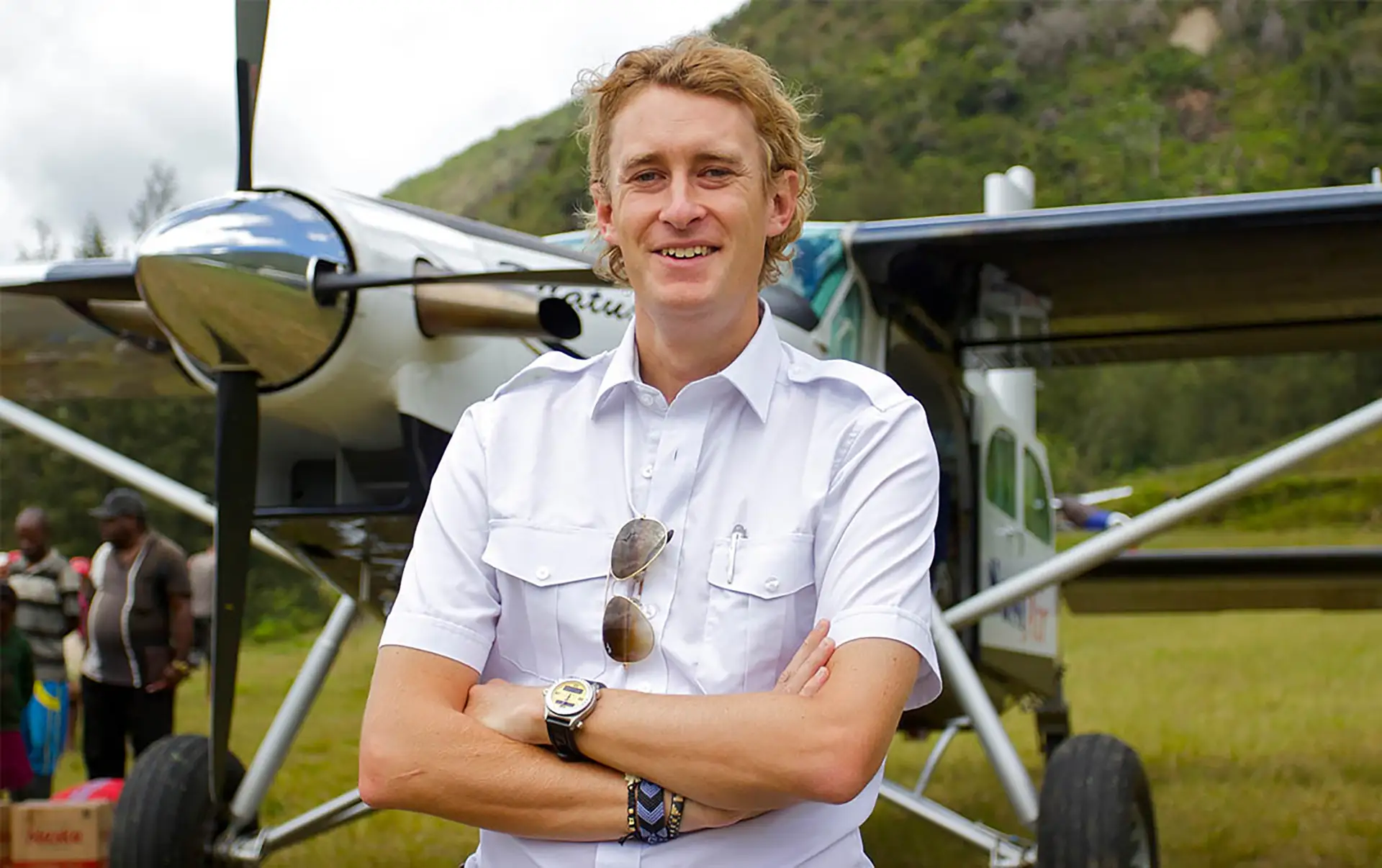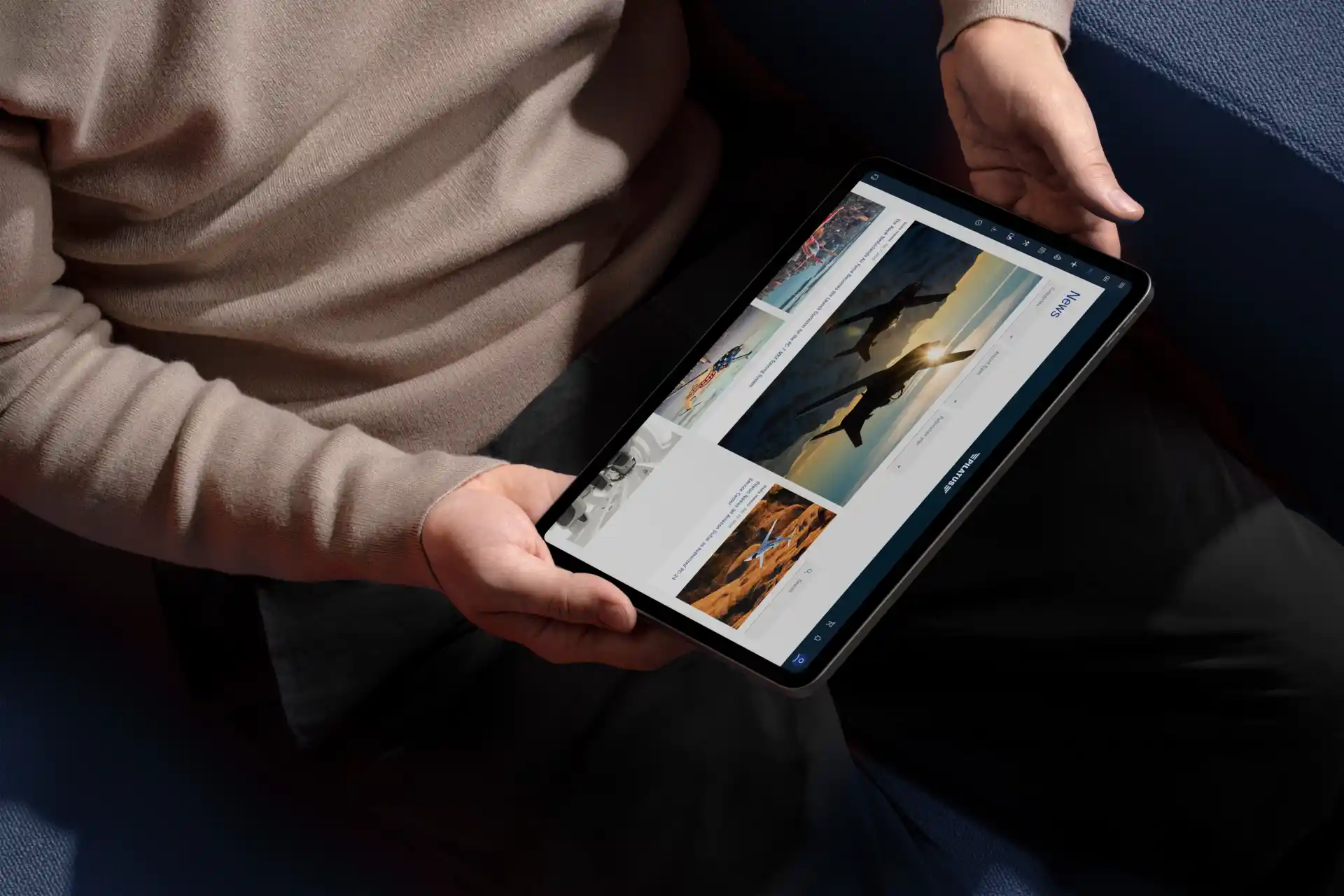Matt Dearden (35) has flown a Pilatus Porter PC-6 for several years for Susi Air in Papua, Indonesia – one oft he world’s remotest regions.
Matt, you starred in one of the episodes in the Channel 4 UK TV series, “Worst Place to be a Pilot”. Is Papua really such a bad place to be a pilot?
I think the title was meant to be rather tongue in cheek! Papua is a fantastic place to be a pilot as far as I’m concerned, especially when the work involves flying a Pilatus Porter PC-6! We fly in a very challenging environment, and the PC-6 is perfect for our mission profile.
Would you call yourself a real bush pilot?
I live in one of the remotest regions in the world and fly into some of the trickiest unmade strips on the planet, with the best STOL (“short takeoff and landing”) aircraft on the market. I guess that comes pretty close to being a bush pilot!
How did you find your way into this job?
I heard of Susi Air for the first time six years ago, after completing my commercial flight training in the UK. I sent off an application and they offered me a job flying one of their Cessna C208B Grand Caravans. After two years as co-pilot and captain I transferred to the Pilatus Porter PC-6. I started off doing training flights on the PC-6, then worked on various unmade strips in the rain forests of Borneo, an island in the Indonesian archipelago, before finally being sent to Papua, which has been my base for the past three years. The combination of stunning mountain scenery and the opportunity to fly a Pilatus Porter make this a really special job!
You currently live in Wamena – how is life there?
Wamena is a reasonable sized town located in the central highlands of Papua at over 1500 m above sea level. It’s quite a slow lifestyle, as everyone is very laid back but outside of the flying there are some interesting things to do, including hiking and biking. But it’s the flying that keeps us pilots here, of course!
What does a typical working day look like for you?
I get up at 4:30 am to get the aircraft ready for the first flight at sunrise, at about 5:30 am. We like to fly early because the winds are calmer. Some days we just do a couple of flights whilst other days it can be five or more trips – it varies.
What do you like in particular about the PC-6? Is there anything you like less?
The PC-6 is a real pilot’s aircraft. The controls are perfectly harmonised and the handling characteristics are nice and predictable. The excellent manoeuvrability allows us to perform manoeuvres in tight spaces, like turning around in narrow valleys or descending through small gaps in the clouds. Quite often the PC-6 is the only aircraft that can get into and out of the many challenging strips here in Papua, and with a decent payload, too. The tailwheel configuration also allows the PC-6 to land on the incredibly steep strips that one finds in this region – some have a 30% upslope! The only negative thing in my view is that the front seats are rather uncomfortable, they could be a bit better.
The short runways and unpredictable weather in this region mean every flight is a challenge. Do you ever feel apprehensive?
A little bit of apprehension can be a good thing as it helps to focus the mind. But having logged thousands of take-offs and landings in some incredibly challenging locations, I rarely feel apprehensive these days.
What kind of operations do you fly in the PC-6 at Susi Air? What do you transport?
We fly mostly government-subsidised routes between remote Papuan villages and the larger towns. It’s a passenger service, mainly, but we also carry cargo such as building supplies, food and fuel. We also run medivac missions. The work is never the same, that’s what makes it so interesting!
How do people react when you arrive in the PC-6?
The locals are always excited when you land at their strip. It’s often the highlight of the day and they’ll rush over to the aircraft to see what’s on board as soon as I’ve shut down the engine. When I fly people in, it’s always nice to see how happy the villagers are to be reunited with their loved ones.
Do you have any anecdotes to tell us from your day-to-day work?
Well, I remember being chased by a crazy guy with a machete and a spear on one occasion! He started running around the aircraft, chanting, as soon as I landed.
What about your personal plans for the future?
I’d like to move onto more complex turboprop or small jet aircraft in a more settled part of the world like Europe. Something like a PC-12 would be the obvious next step – I’d love to fly an aircraft like that one day!
Susi Air
Based in Pangandaran, Indonesia, Susi Air is an Indonesian charter company founded in 2004. The airline started out with two aircraft in response to the devastating earthquake and tsunami of December 2004, which destroyed vast areas of Indonesia. In 2006, after initially doing relief work only, Susi Air began operating scheduled commercial routes out of Medan. Susi Air currently runs a fleet of 50 aircraft, including 9 Pilatus Porter PC-6s.
Worst Place to be a Pilot
The by Channel 4 produced serie “Worst Place to be a Pilot” documents the highs and lows in the careers of young British pilots working for Susi Air in some of the remotest and most dangerous regions of Indonesia.

